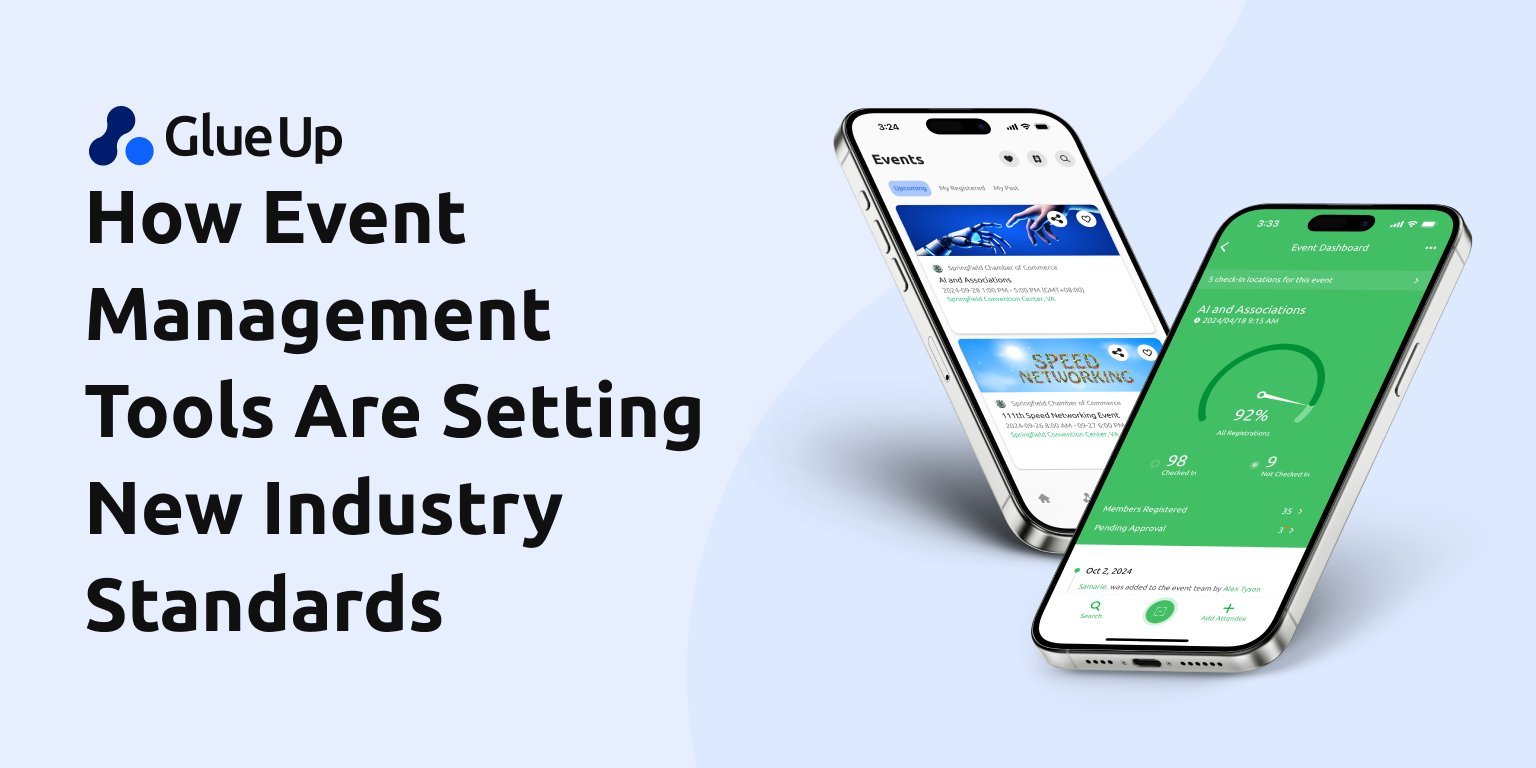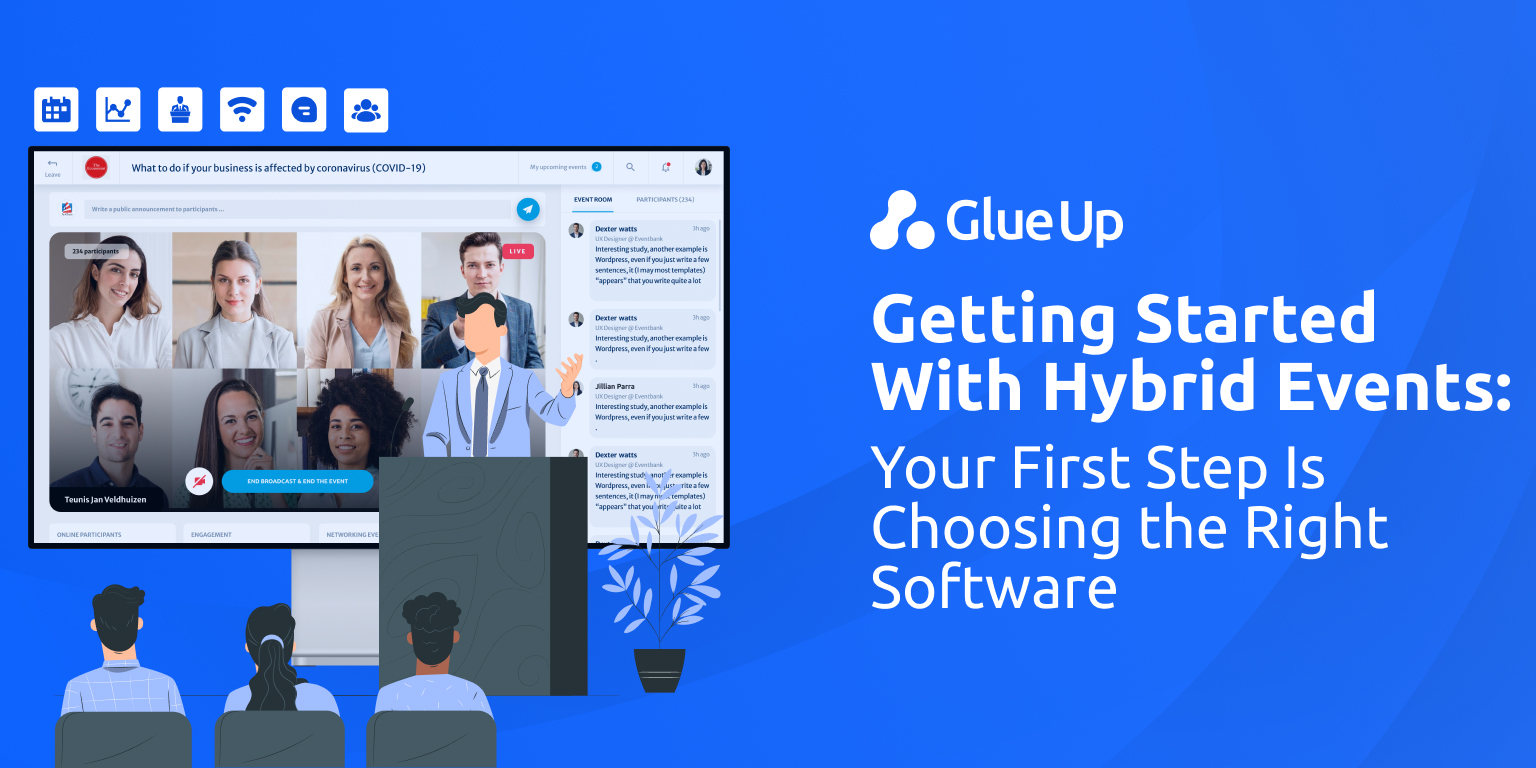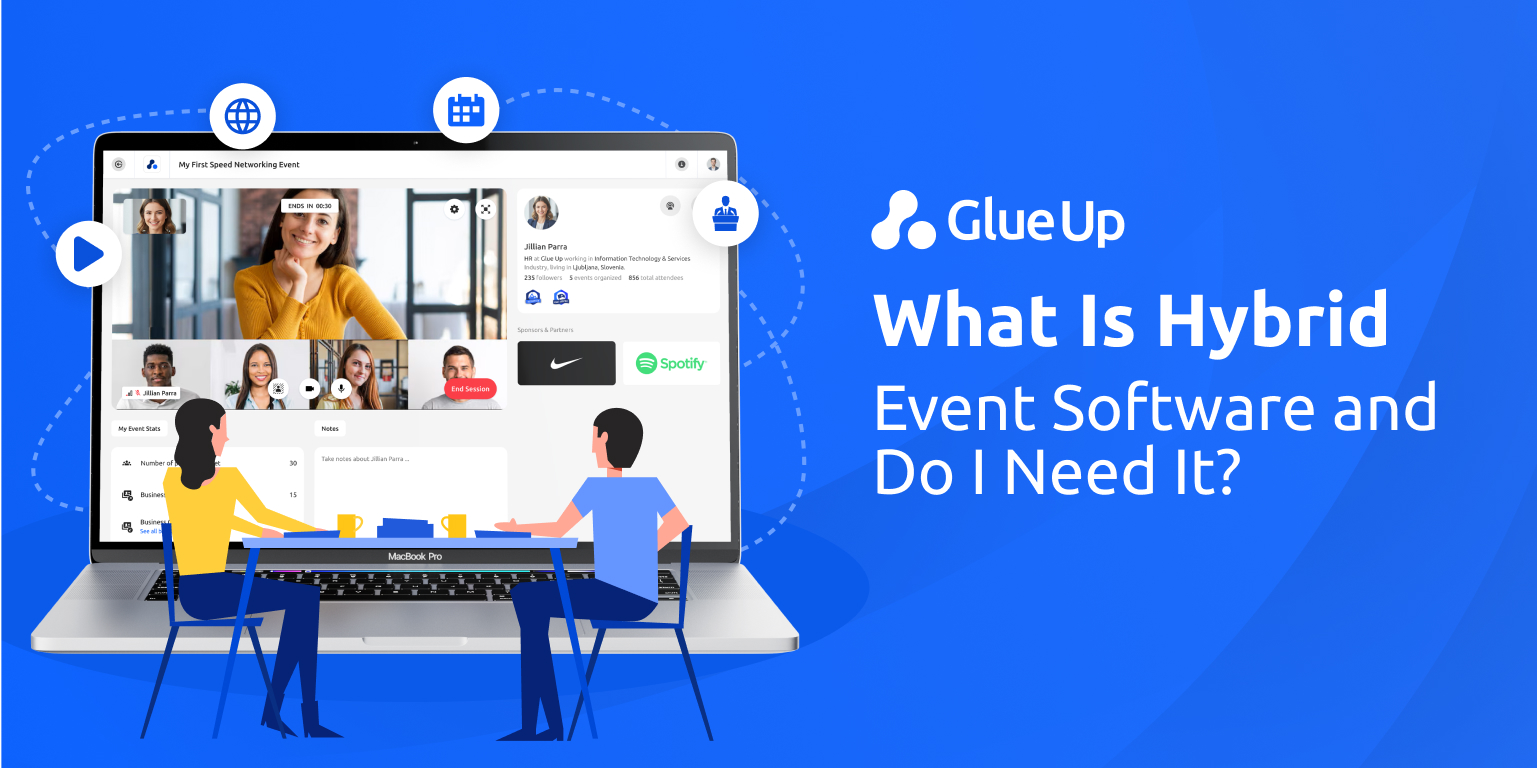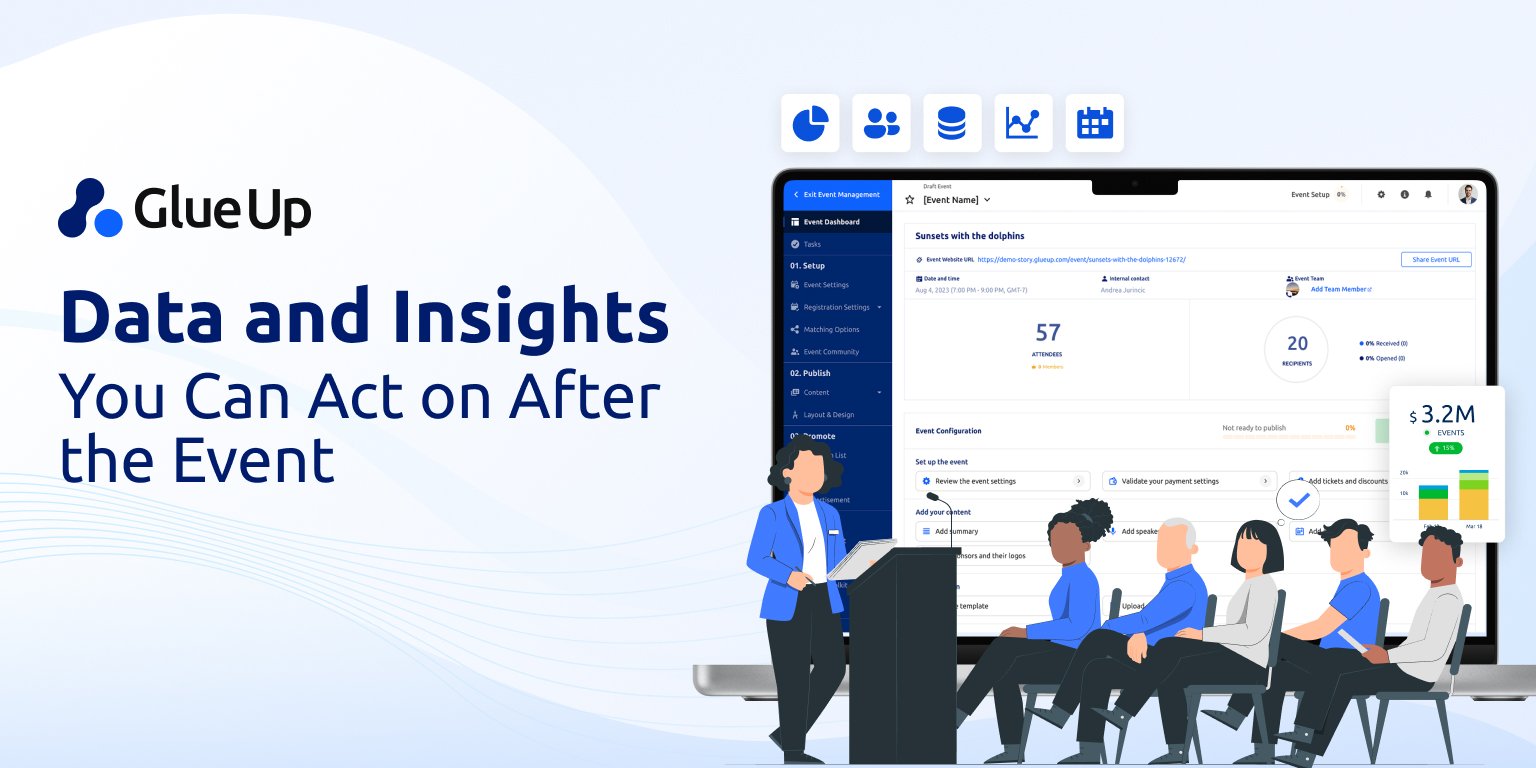
Planning an event once meant juggling spreadsheets, sending countless email reminders, and hoping nothing slipped through. For many associations, chambers, and training institutes, that approach was exhausting and error-prone.
Now expectations have changed. Attendees no longer settle for just a seat in the room. They expect tailored experiences, real-time mobile updates, and seamless interactions before, during, and after the event. The bar’s higher, and event management software is what helps you reach it.
In this article, you’ll see how event management tools have evolved, which features are now the new industry standard, and how to choose the right system to keep your organization ahead.
Or, you can watch the video below for a quick overview and skip ahead to book a demo to see the solution in action.
How Event Planning Tools Have Evolved
Event planning used to be a grind. Between paper registrations, manual reminders, and tracking attendees on spreadsheets, teams often spent more time managing logistics than creating meaningful experiences.
Modern event management tools have changed that. Today’s platforms are built to reduce manual work, minimize errors, and scale with your organization. Features like online registration, automated emails, customizable agendas, and centralized communication help you plan events faster and with more confidence.
It’s not just about automation. These systems now connect with your CRM, email campaigns, and analytics dashboards, turning every event into a source of data you can act on. And no more guessing, since you can easily measure engagement, track revenue, and adjust strategy accordingly.
Whether you’re hosting a 50-person workshop or a 5,000-attendee conference, modern tools keep the process organized, efficient, and aligned with your larger goals.
Setting New Standards: What Modern Event Software Must Deliver
It’s no longer enough for event software to just “get the job done.” Today’s top-performing platforms are setting a new standard, combining speed, flexibility, and personalization in ways that were unthinkable a few years ago.
Here’s what that looks like in practice:
Automation and Operational Efficiency
Modern systems take repetitive tasks off your plate. Ticketing, confirmations, waitlists, and post-event follow-ups can all run automatically. That frees your team to focus on what really matters, like curating speakers or creating meaningful networking opportunities.
Real-Time Data and Analytics
You shouldn’t have to wait until the event’s over to know what worked. The best tools give you live dashboards that track registrations, revenue, attendee engagement, and survey responses, so you can make adjustments on the fly.
Engagement-First Attendee Experience
A modern platform puts your attendees first. Event apps now include mobile agendas, event rooms where people can connect, built-in chat, and instant access to speaker bios and resources . These aren’t extras anymore. Modern members and sponsors expect them.
Support for Hybrid and Virtual Formats
Whether you’re hosting a local networking night or a global hybrid summit, your tools need to be flexible. The best software adapts across formats, giving attendees a consistent experience whether they’re in the room or online.
Tailored Benefits by Audience
Attendees get smoother registration, mobile agendas, event rooms for networking, and timely updates that make the whole experience feel seamless
Organizers spend less time on manual tasks and gain real-time dashboards that track registrations, payments, and engagement, so they can focus on strategy instead of logistics.
Sponsors and Partners see clearer ROI with attendee engagement data, branded visibility in event apps and pages, and easier ways to connect with their target audience.
How to Choose the Right Event Management System for Your Organization
Not every event platform is built the same, and not every organization needs the same set of tools. The right solution should fit your goals, scale with your needs, and work well with the systems you already use.
Here are the top factors to consider when making your choice:
Scalability
Your software should work whether you're hosting small monthly meetups or large annual conferences. Look for platforms that can handle growing attendee lists, more complex agendas, and new event formats, without slowing you down.
Integrations
The best event systems don’t live in isolation. Make sure the platform integrates with your CRM, email marketing tools, payment gateways, and analytics dashboards. That way, you can keep all your member and event data connected. Third-party integrations with popular solutions also avoid software bloat across your team and tech infrastructure.
User Experience
Both your team and your attendees should find the system easy to use. Is the backend clean and intuitive? Can attendees register or join virtual events in just a few clicks? A clunky platform will cost you time and trust.
Customer Support
Even the best tools hit bumps. Strong customer support, especially during live events, can make all the difference. Look for responsive, knowledgeable teams that know how to troubleshoot quickly and speak your language.
Future-Readiness
Technology is moving fast. Choose a platform that’s keeping up, whether that means supporting AI features, mobile-first engagement, or flexible hybrid experiences. You want a partner who grows with you, not one who holds you back.
Audience-Specific Considerations
- Associations and chambers may need member portals, tiered access, and engagement tracking.
- Nonprofits often prioritize cost-efficiency, donor visibility, and volunteer coordination.
- Corporate teams should focus on branding, reporting, and internal collaboration tools.
Taking the time to evaluate what really matters to your organization will save you more than just budget; it’ll save your events from falling short of expectations.
Ready to Raise the Bar on Your Events? Glue Up Is
Your attendees expect more than organized schedules and name tags; they want experiences that feel thoughtful, engaging, and easy. That starts with the tools you use behind the scenes.
Glue Up’s all-in-one AI-powered event management software helps you run professional, high-impact events without the overwhelm. Whether you’re organizing a single workshop or a series of hybrid conferences, Glue Up gives you the flexibility, control, and insights you need to succeed.
With Glue Up, you can:
Plan and execute seamlessly by managing registration, ticketing, payments, and follow-up in one integrated platform.
Design branded event pages in minutes with templates and customization tools that eliminate the need for coding.
Engage attendees on mobile through a dedicated app with live agendas, speaker bios, networking features, and one-to-one chats.
Communicate with precision using automated emails, push notifications, private community (add-on), etc.
Gain real-time visibility through analytics, feedback loops, and surveys that drive continuous improvement.
Elevate networking opportunities with digital business cards, private groups, speed networking, and conversations captured directly into your CRM.
Glue Up empowers organizations to transform events into strategic assets that strengthen engagement, enhance brand credibility, and deliver measurable outcomes. Schedule a demo today to see how your events can set a new industry benchmark.
With Glue Up, you’re not just checking boxes. You’re creating event experiences that leave a lasting impression. Book a demo with Glue Up today and discover how your events can set a new standard.
Quick Reads
- Add-On Cart for Member Retention & Growth
- Simplify Multi-Currency Payment Posting for Community Chapters With Glue Up + Paygage
- AI Automation for Event Registration & Beyond
- Integrating AI into CRM for Membership Growth
- How to Build a Chapter Event Calendar
- What Is All-In-One Association Software?
- AI-Powered Member Check-In Software



